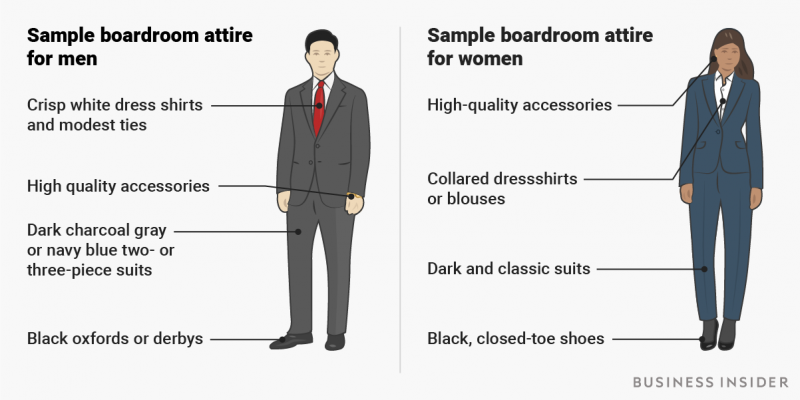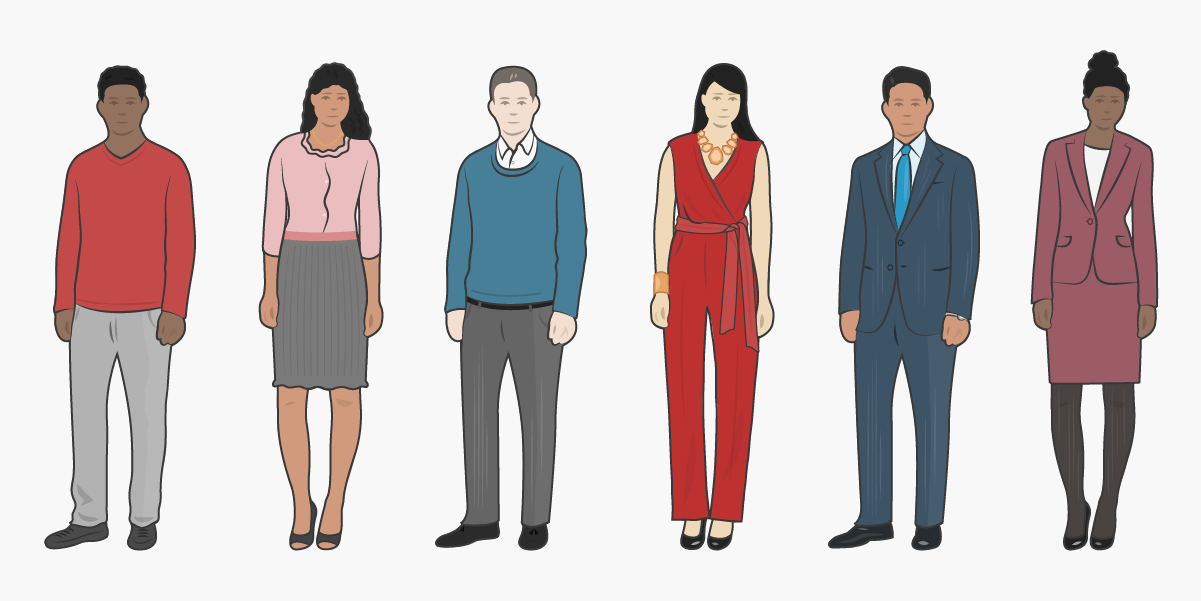• Figuring out how to dress for work can be confusing and frustrating.
• But dressing appropriately for the job is crucial.
• From casual clothing to boardroom attire, here’s a handy guide to dressing for success.
There was once a time when every professional, no matter his or her industry, put on a suit each morning.
But today, there are so many interpretations of formal and business casual that it can be easy to look sloppy or over-dressed if you're not aware of the environment.
Sylvie di Giusto, founder of Executive Image Consulting, works with executives looking to improve how they present themselves and professionals hoping to impress their clients and bosses. In her book "The Image of Leadership," she breaks down the five levels of dress code that she uses with her clients.
If you're not sure which level is most appropriate for your work environment, the basic rule of thumb is "the more you deal with a client's money, the more traditional and conservative you should be dressed," di Giusto told Business Insider.
In general, that means that people in finance, law, and accounting, for example, should stick to traditional business attire, and those in creative industries, like entertainment and advertising, can dress more flexibly within the casual levels.
If you're a member of the board or meeting with a member of the board, boardroom attire is most appropriate - regardless of the size of the company.
That being said, di Giusto added that there is "no cookie cutter approach'" or a "one-size-fits-all formula."
"In fact, professionals must be able to adapt and adjust their professional style based on the industry they work for - plus the clients they serve," di Giusto said.
For example, she noted that boardroom attire "might look very different in a startup in Silicon Valley than for financial advisors or attorneys in New York City."
Ultimately, di Giusto said, it's up to you to choose what works best in your office environment.
"Everything goes, from pants, dresses, skirts, jumpsuits - as long as they represent themselves in the best possible way and choose the right fit, fabrics, colors, and patterns," she said.
When it comes to dressing for success, you've got a ton of options. Below are some ideas of what you could wear for each level of dress based on di Giusto's recommendations:
Baseline casual is more relaxed, but still neat and professional
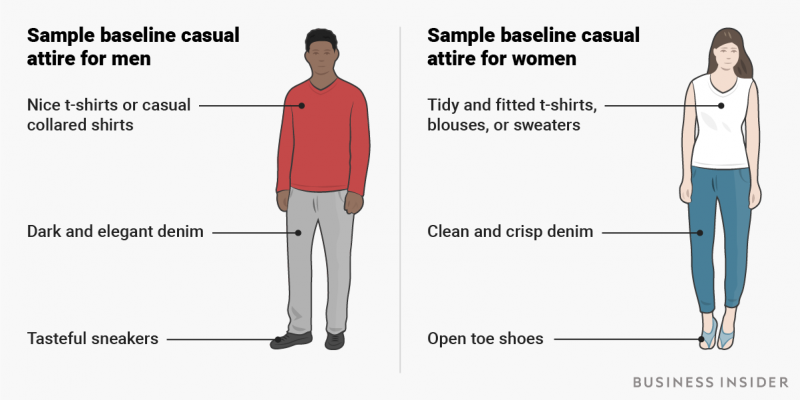
Business casual provides people with a more polished look
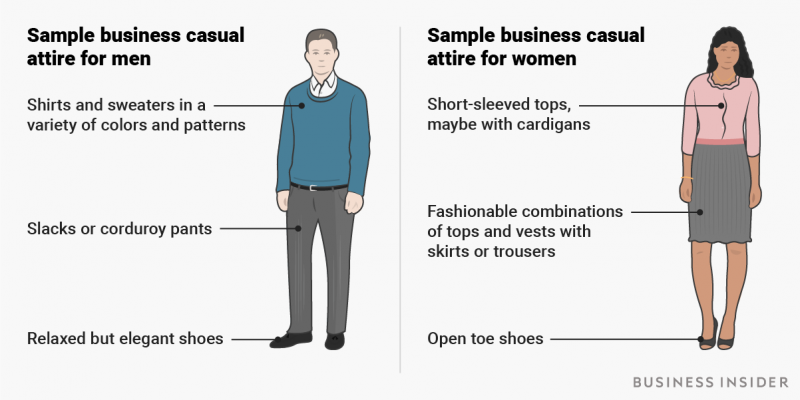
Executive casual dress is professional, without being stuffy
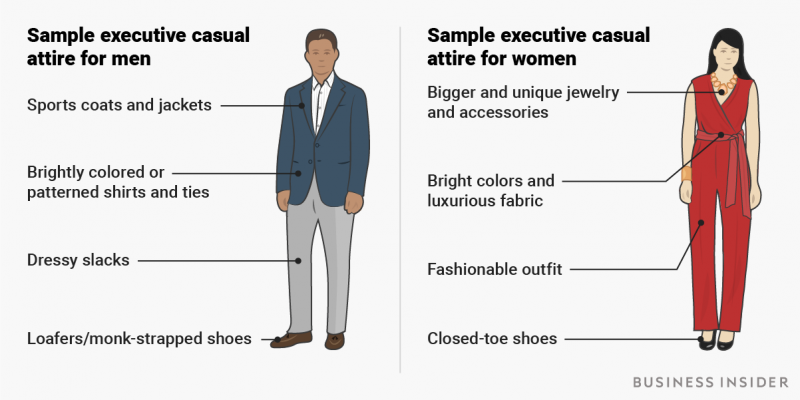
Traditional business attire is formal, but allows for a pop of personality
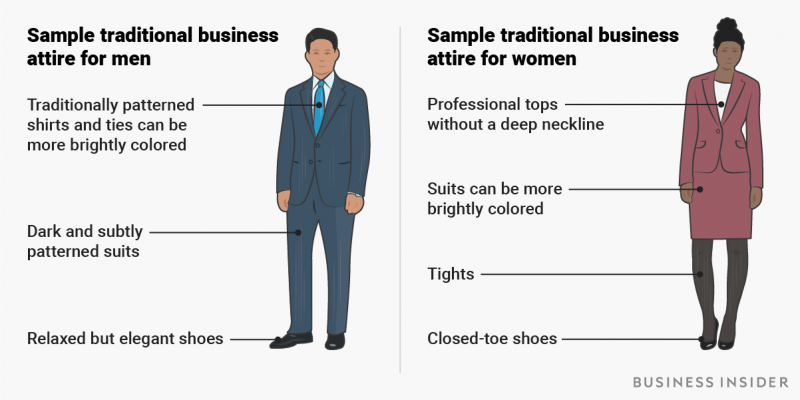
Boardroom attire tends to be more tailored, high-end, and conservative
